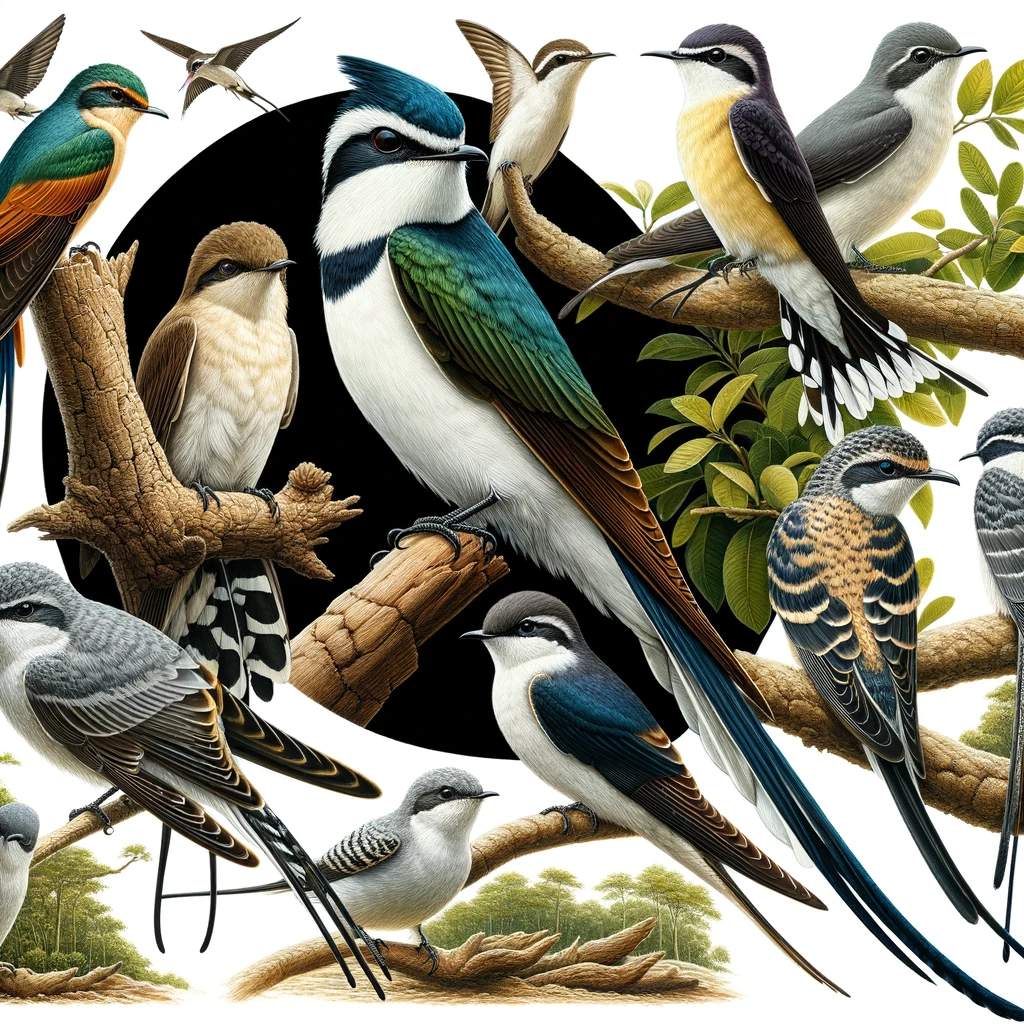
Hidden within the awe-inspiring scenery of Nepal is a wealth of biodiversity just waiting to be discovered. Amidst its varied plant and animal life, one can find the enchanting Hemiprocnidae bird family. Also known as tree swifts, these elegant creatures are a prime example of the diverse avian heritage in this South Asian country. Let us discuss the wonders of these captivating birds and explore their significance within the ecosystem of Nepal.
Revealing the Secrets of Hemiprocnidae Birds
The Hemiprocnidae family, commonly referred to as tree swifts, is comprised of merely four species. They exhibit distinctive features that set them apart from their close cousins, the true swifts. With elongated wings and a sleek body shape, these birds display exceptional aerial prowess. Their strong resemblance to swallows may lead to mix-ups, but a more detailed examination will reveal the subtle yet distinguishing traits of tree swifts.
The quartet that makes up the Hemiprocnidae family consists of: Whiskered Treeswift (Hemiprocne comata), Grey-rumped Treeswift (Hemiprocne longipennis), Crested Treeswift (Hemiprocne coronata), and Moustached Treeswift (Hemiprocne mystacea). These delightful avians reside across Southeast Asia, inhabiting countries like Nepal, India, Myanmar, Indonesia and parts of China.
A Peek into Their Habitat and Behavior
Nepal's countryside is rich with dense forests that offer an ideal setting for bird lovers to observe Hemiprocnidae birds in their natural surroundings. Favoring large canopies in wooded areas, these nimble creatures frequently swoop through the foliage in pursuit of insects – their primary food source.
Tree swifts showcase impressive agility and speed as they engage in mid-air stunts to catch prey. Interestingly, unlike their swift cousins, Hemiprocnidae birds are known to perch on branches. They accomplish this with the help of semi-zygodactyl feet, which enables them to rest while watching for potential snacks.
The Importance of Hemiprocnidae Birds in Nepal's Ecosystem
As insect eaters, Hemiprocnidae birds play a crucial part in sustaining harmony within Nepal's ecosystem. By consuming insects, tree swifts help control insect populations, nurture healthy forests, and aid plant growth. Additionally, they act as a source of food for larger predators, contributing to the ecological balance and natural cycle of the region.
Conservation Initiatives and Nurturing Biodiversity
Preserving the balance among species and ensuring their survival is vital to any ecosystem. In Nepal, dedicated efforts have been made to maintain forest habitats and safeguard endangered species. By encouraging eco-friendly tourism practices and raising awareness about these bewitching birds, we can ensure that future generations will continue to witness the thriving Hemiprocnidae family residing in Nepal's wilderness.
In summary, though just a small component of Nepal's abundant wildlife offerings, Hemiprocnidae birds hold a deep fascination. Their presence enriches the country's extraordinary landscapes and serves as a reminder of our duty to protect these charming creatures. So when journeying through Nepal's beautiful regions, be sure not to miss the swift-winged wonders that soar amongst its skies.
